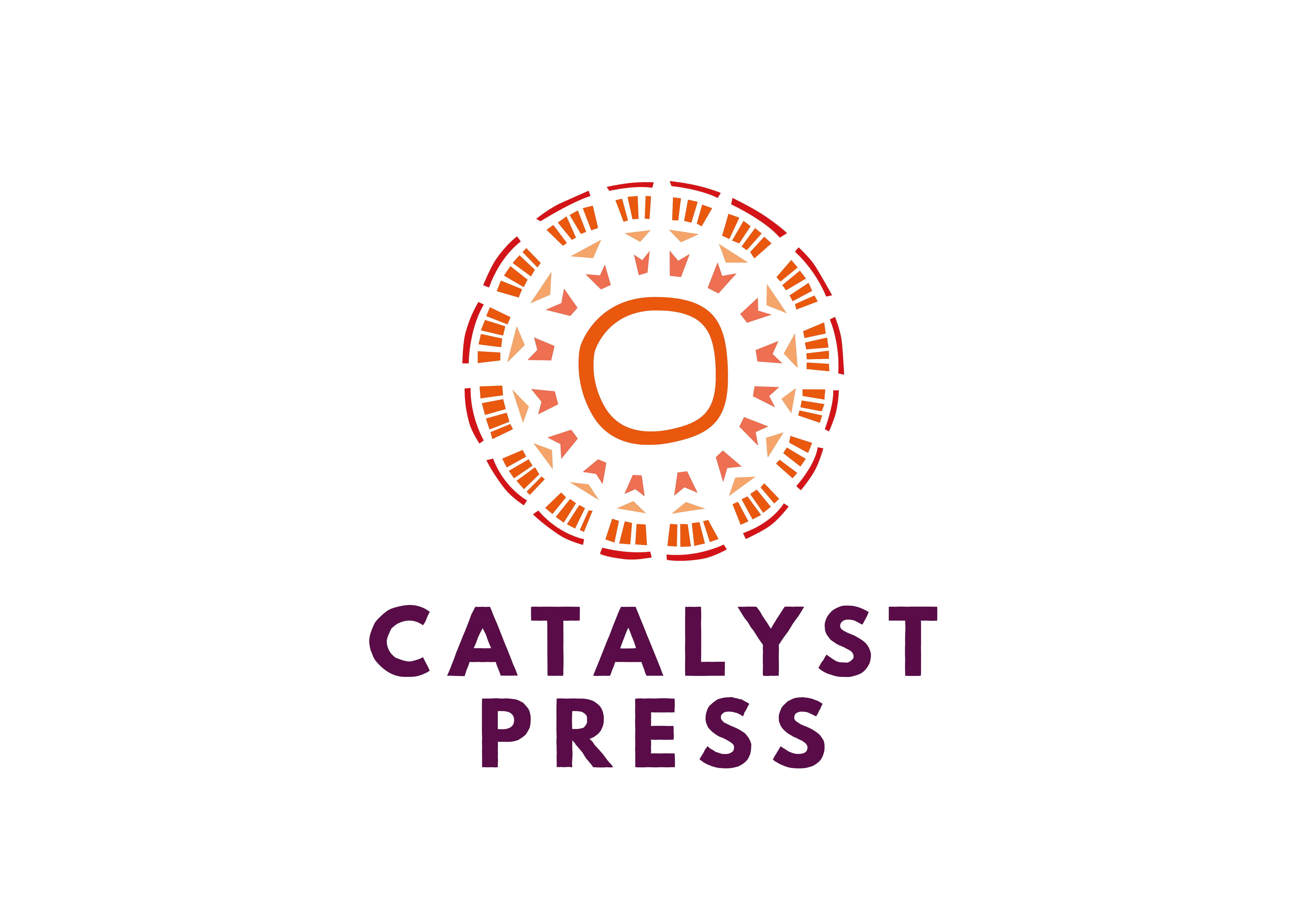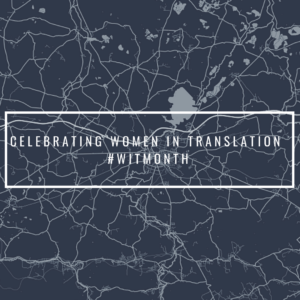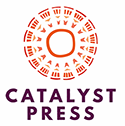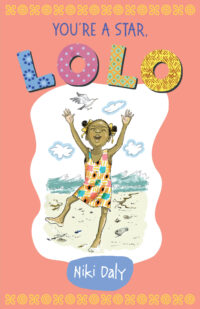We’re celebrating Women in Translation Month by turning the spotlight on the authors and translators who make our books so wonderful. Today, we meet Rachel Hildebrandt. Rachel is a German-language translator and one of the founders of the Global Literature in Libraries Initiative, an organization whose aim is to get world literature—particularly translation—to as wide an audience as possible. Rachel has translated several books, both fiction and non-fiction, including Fade to Black by Zoë Beck and Staying Human by Katharina Stegelmann. Her work with Global Literature in Libraries has provided an amazing resource for readers who want to read globally, and add more women’s voices to their shelves. We’re excited to bring Rachel into the #TeamCatalyst fold, as the translator for our upcoming release The Wall by Max Annas.
We chatted with Rachel about her background, her work, how readers can read more broadly, and how she uses translation to “open up windows and openings where they have been boarded up or forgotten.”
How did you come to working in translation?
I came to translation rather obliquely. I don’t hold any degrees in translation or even in German. In college, I studied art history and took German as my foreign language. I had a family connection to the language, since I come from a long line of German Texans, and had already visited Germany twice by the time I was 18.
After this, I started graduate studies in historic preservation at the University of Georgia,
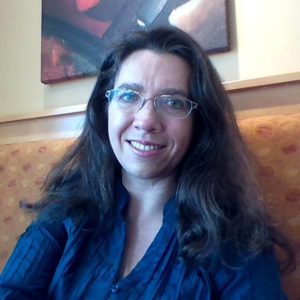
but I entered that program knowing I wanted to return to Germany for a year in order to study historic preservation there and to do the research for my master’s thesis, which focused on the preservation of Sorbian towns and villages during the post-war era. I received a Fulbright Fellowship and a Rotary International scholarship to do just this, and spent the second year of my graduate studies in Dresden.
During that time, I began to do some translation work for both the Sorbian Institute and another nonprofit foundation in Saxony. I had always enjoyed working with language, and this felt like a natural progression, as my skills in both German and written English expanded. It helped tremendously that I had spent my undergraduate years at Sewanee, where strong writing is a key element to the education there. I simply expanded on my vocabulary and grammar skills as the years passed, reading extensively and honing my eye by providing editing services for a growing number of graduate students and professors. I didn’t move directly into literary translation, though.
After completing my master’s degree, I worked for some years as a historical landscape consultant for the National Park Service and pulled together several small exhibits. On the side, I did small translation gigs: church records, legal and medical documents, secondary source translations for historians and students. About two years ago, I decided to try my hand at literary translation. Fiction has always been my personal reading passion, so I thought I would give it a go. Long story not so short, that is how I landed here.
What’s your process like when you approach a new work?
When I pick up a new book, reading it through is always the first step. It is critical to “hear” the author’s voice inside through the process of grappling with a manuscript as a first-time reader. What images are evoked? How are they evoked? How is the action framed and propelled? No two styles are ever identical, and that is the lion’s share of the challenge. How do I make sure that all the authors I work with don’t simply end up sounding like what Rachel Hildebrandt would write if she even had a clue how to write a novel?

For me, the joy of working with contemporary literature is largely grounded in the fact that I can communicate with the authors themselves about their works. I can ask questions of them, while they can push me to be braver and freer with their books than I might feel like I can be. That is the growing process for me. I feel like I have become the translator I am today because of the empowerment and support provided by these very authors. For that, I am extremely grateful, especially to Wolfgang Hermann, Zoë Beck, Andreas Izquierdo, and Max Annas. I am very fortunate to work with German, in the sense that German speakers often have strong English skills, which means they can read and reflect on the translations I write. They become co-creators of the translations. Translators are often not accepted within the artistic community as creatives, but the finest translators I know are wildly imaginative, highly skilled crafters of words. When authors view us as such, that goes unbelievably far in making our task of conveying books across borders a much easier and fulfilling task.
Translators are often not accepted within the artistic community as creatives, but the finest translators I know are wildly imaginative, highly skilled crafters of words.
How do you preserve the subtleties of language when you’re translating?
As I mentioned above, a translator must engage in a constant striving for self-effacement. You shouldn’t feel us, though you should definitely know we are there. Without awareness of our role, the author’s identity as a non-Anglophone writer becomes muddied and obscure. The reader needs to know, for example, that Max Annas is German and not American or British. With that said, it is hard to quantify the process whereby the subtlety of language is preserved. All good translators know that a belabored, tight translation can’t breathe or sparkle.
As time passes, I find myself increasingly willing to take liberties with sentence structure. I will shuffle bits and pieces of sentences around in order to make the English translation flow better. Sentences in German tend to be longer than they are in English. I can’t do justice to a novel, if I’m not willing to convey more than a literal translation. A novel must function and grow into each new language in which it is rendered. However, if an author likes long, rambling sentences or short, choppy ones, I try to convey that in English to avoid that issue of sameness I mentioned above.
All good translators know that a belabored, tight translation can’t breathe or sparkle.
What was the process like with The Wall?

I discovered Max Annas’ works over a year ago, and since that time, I have read four of his novels, each one as powerful and gutting as the other. For me, reading the novel itself – or ever several novels by the same author – is a critical step in my getting a sense of how he/she uses language. The Wall is the first of Max’s novels to be translated into English and the first of his texts that I am working on myself. When I worked up the sample for The Wall for the submission process to publishers, I contacted Max directly. We happened to be Facebook friends by that point, so it was easy to reach out to him and share with him my interest in trying to find a home for an English translation of this novel.
How can US readers open ourselves to translated works? Where do you recommend people look for new voices?
Due to the sheer number of books being published in English out of all the Anglophone countries, most US readers do not read with an eye to global diversity. They might be aware that they should be reading books from writers of color, but these books still tend to be English originals. Finding international writers can be a challenge, especially for those who aren’t following specific review platforms. And to be honest, most general readers aren’t reading the reviews from the New York Times, Kirkus, or Booklist. They find their books through a kind of literary serendipity. I could provide a long list of amazing publishers of literature in translation, but many readers are also not tracking the publishers that way.
With that mind, I have a couple of suggestions. Visit the Global Literature in Libraries Initiative’s website: https://glli-us.org/. Here you can find book reviews, excerpts, and general articles about literature from different parts of the world. The goal of this initiative is to help libraries find and program with translated works for all age groups and from all genres, but this information is just as useful for readers of all kinds. You can also find a list of publishers there, which will hopefully guide you to some of the most intrepid and engaged publishers in the market today.
If you are a goals-driven reader, commit to reading a book from an author from each of the continents, maybe two books – one by a man, one by a woman. Or if you like a specific genre – like crime fiction – apply the same model to reading the world but within that genre. If you need some suggestions of books, LitHub is a good source for round-up style articles of translations that fall within specific categories. And lastly, if you are still up a creek, contact the Global Lit in Libs folks via the website. We would be glad to provide some personalized suggestions, tailored to your personal preferences.
What’s something that you’ve found surprising in the course of your work?
What’s something you really want people to know about your work?
For me, the translation of books is about tearing down walls and bridging boundaries. Frost once wrote that good fences make good neighbors. That might be true in the physical world of geographic proximity, but it’s not true in the linguistic one. Boundaries and walls harm through the projection of otherness/outsiderness and the fear that this obviously creates, a theme that is explosively explored in The Wall. Fiction cultivates empathy and opens up the world in a way unlike any other, especially for those who don’t have the opportunities or wherewithal to travel the world. So for me, it’s not just that the books and authors deserve a wider audience in English. The readers deserve these books and need to know these voices, especially the those of women in translation, who continue to be underrepresented in the publishing output of English translations.
Fiction cultivates empathy and opens up the world in a way unlike any other, especially for those who don’t have the opportunities or wherewithal to travel the world.
